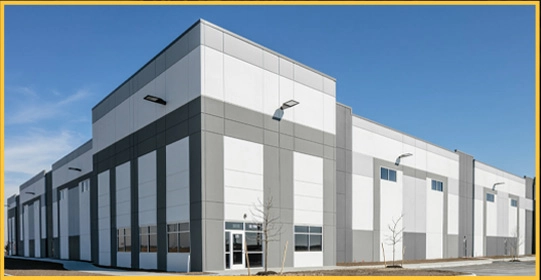
-
 Afrikaans
Afrikaans -
 Albanian
Albanian -
 Amharic
Amharic -
 Arabic
Arabic -
 Armenian
Armenian -
 Azerbaijani
Azerbaijani -
 Basque
Basque -
 Belarusian
Belarusian -
 Bengali
Bengali -
 Bosnian
Bosnian -
 Bulgarian
Bulgarian -
 Catalan
Catalan -
 Cebuano
Cebuano -
 Corsican
Corsican -
 Croatian
Croatian -
 Czech
Czech -
 Danish
Danish -
 Dutch
Dutch -
 English
English -
 Esperanto
Esperanto -
 Estonian
Estonian -
 Finnish
Finnish -
 French
French -
 Frisian
Frisian -
 Galician
Galician -
 Georgian
Georgian -
 German
German -
 Greek
Greek -
 Gujarati
Gujarati -
 Haitian Creole
Haitian Creole -
 hausa
hausa -
 hawaiian
hawaiian -
 Hebrew
Hebrew -
 Hindi
Hindi -
 Miao
Miao -
 Hungarian
Hungarian -
 Icelandic
Icelandic -
 igbo
igbo -
 Indonesian
Indonesian -
 irish
irish -
 Italian
Italian -
 Japanese
Japanese -
 Javanese
Javanese -
 Kannada
Kannada -
 kazakh
kazakh -
 Khmer
Khmer -
 Rwandese
Rwandese -
 Korean
Korean -
 Kurdish
Kurdish -
 Kyrgyz
Kyrgyz -
 Lao
Lao -
 Latin
Latin -
 Latvian
Latvian -
 Lithuanian
Lithuanian -
 Luxembourgish
Luxembourgish -
 Macedonian
Macedonian -
 Malgashi
Malgashi -
 Malay
Malay -
 Malayalam
Malayalam -
 Maltese
Maltese -
 Maori
Maori -
 Marathi
Marathi -
 Mongolian
Mongolian -
 Myanmar
Myanmar -
 Nepali
Nepali -
 Norwegian
Norwegian -
 Norwegian
Norwegian -
 Occitan
Occitan -
 Pashto
Pashto -
 Persian
Persian -
 Polish
Polish -
 Portuguese
Portuguese -
 Punjabi
Punjabi -
 Romanian
Romanian -
 Russian
Russian -
 Samoan
Samoan -
 Scottish Gaelic
Scottish Gaelic -
 Serbian
Serbian -
 Sesotho
Sesotho -
 Shona
Shona -
 Sindhi
Sindhi -
 Sinhala
Sinhala -
 Slovak
Slovak -
 Slovenian
Slovenian -
 Somali
Somali -
 Spanish
Spanish -
 Sundanese
Sundanese -
 Swahili
Swahili -
 Swedish
Swedish -
 Tagalog
Tagalog -
 Tajik
Tajik -
 Tamil
Tamil -
 Tatar
Tatar -
 Telugu
Telugu -
 Thai
Thai -
 Turkish
Turkish -
 Turkmen
Turkmen -
 Ukrainian
Ukrainian -
 Urdu
Urdu -
 Uighur
Uighur -
 Uzbek
Uzbek -
 Vietnamese
Vietnamese -
 Welsh
Welsh -
 Bantu
Bantu -
 Yiddish
Yiddish -
 Yoruba
Yoruba -
 Zulu
Zulu


ພ.ຈ. . 05, 2024 02:19 Back to list
chain block 5 ton capacity
Exploring the Capacity of Chain Block A Focus on 5 Ton Models
In industrial and construction environments, lifting heavy loads is often a daily requirement. One of the most reliable and efficient tools employed for this purpose is the chain block, also known as a chain hoist. Chain blocks come in various models and capacities, with the 5-ton capacity models being particularly popular due to their versatility and effectiveness. This article will explore the features, applications, and benefits of 5-ton chain blocks, emphasizing their vital role in modern lifting operations.
Understanding Chain Blocks
Chain blocks are devices designed for lifting heavy loads through the use of a chain mechanism and a powerful gear system. They typically consist of a chain, a hook, and a housing that encloses the lifting mechanism. The operation is simple as the user pulls on the hand chain, the mechanism engages the gears, allowing the load to be lifted with relative ease. The strength of a chain block is determined by its construction material, design, and the quality of its components.
Capacity and Specifications
A 5-ton chain block is engineered to lift loads up to 5 metric tons (or approximately 11,000 pounds). This capacity makes it suitable for a wide range of applications, from moving hefty machinery to hoisting construction materials. The typical specifications for a 5-ton chain block include a lifting height, hook lift distance, and various chain lengths, which can be customized based on specific operational needs.
Applications in Various Industries
The versatility of a 5-ton chain block makes it indispensable in numerous industries. In construction, it is used to lift steel beams, concrete panels, and other heavy materials. In manufacturing, chain blocks facilitate the movement of machinery and products along production lines. Additionally, in warehouses, they assist in loading and unloading goods, optimizing space utilization and improving efficiency.
chain block 5 ton capacity

Moreover, chain blocks are commonly employed in automotive industries for lifting engines and other components during repairs or assembly
. Their capacity also makes them essential in shipping and logistics, where they are used to handle shipping containers and heavy freight.Advantages of Using Chain Blocks
1. Cost-Effectiveness Compared to other lifting technologies, such as electric hoists or cranes, chain blocks are relatively inexpensive to purchase and maintain. Their simplicity in design leads to lower repair costs and a longer lifespan.
2. Portability Most 5-ton chain blocks are designed for easy portability, allowing users to move them around job sites with minimal effort. This is particularly beneficial in dynamic environments where lifting points change frequently.
3. Ease of Use Operating a chain block requires minimal training, making it accessible to a wide range of personnel. The manual operation allows for greater control and precision when lifting delicate or oversized loads.
4. Safety High-quality chain blocks come with built-in safety features such as overload protection and robust hooks with safety latches. When used properly, they significantly reduce the risk of accidents associated with lifting heavy loads.
Conclusion
The 5-ton chain block stands out as a key tool in the lifting operations of various industries. Its robust design, simplicity of use, and versatility ensure that it remains a popular choice among professionals tasked with moving heavy objects. Whether on a construction site or in a manufacturing plant, the reliability and efficiency of 5-ton chain blocks continue to enhance productivity and safety, making them an indispensable asset in the realm of heavy lifting. By understanding their capabilities and advantages, businesses can leverage these tools to optimize their operations and ensure a safe working environment.
Latest news
What Are Construction Tools and How Are They Used?
NewsJul.11,2025
Professional-Grade Duct Rodding Tools for Superior Cable Installation
NewsJul.11,2025
Enhancing Safety and Efficiency with Modern Hot Stick Solutions
NewsJul.11,2025
Empowering Cable Installation with Advanced Rodder Solutions
NewsJul.11,2025
Elevate Your Cable Installation Projects with Cable Pulling Tools
NewsJul.11,2025
Efficient Cable Handling Solutions: Cable Rollers for Sale
NewsJul.11,2025











